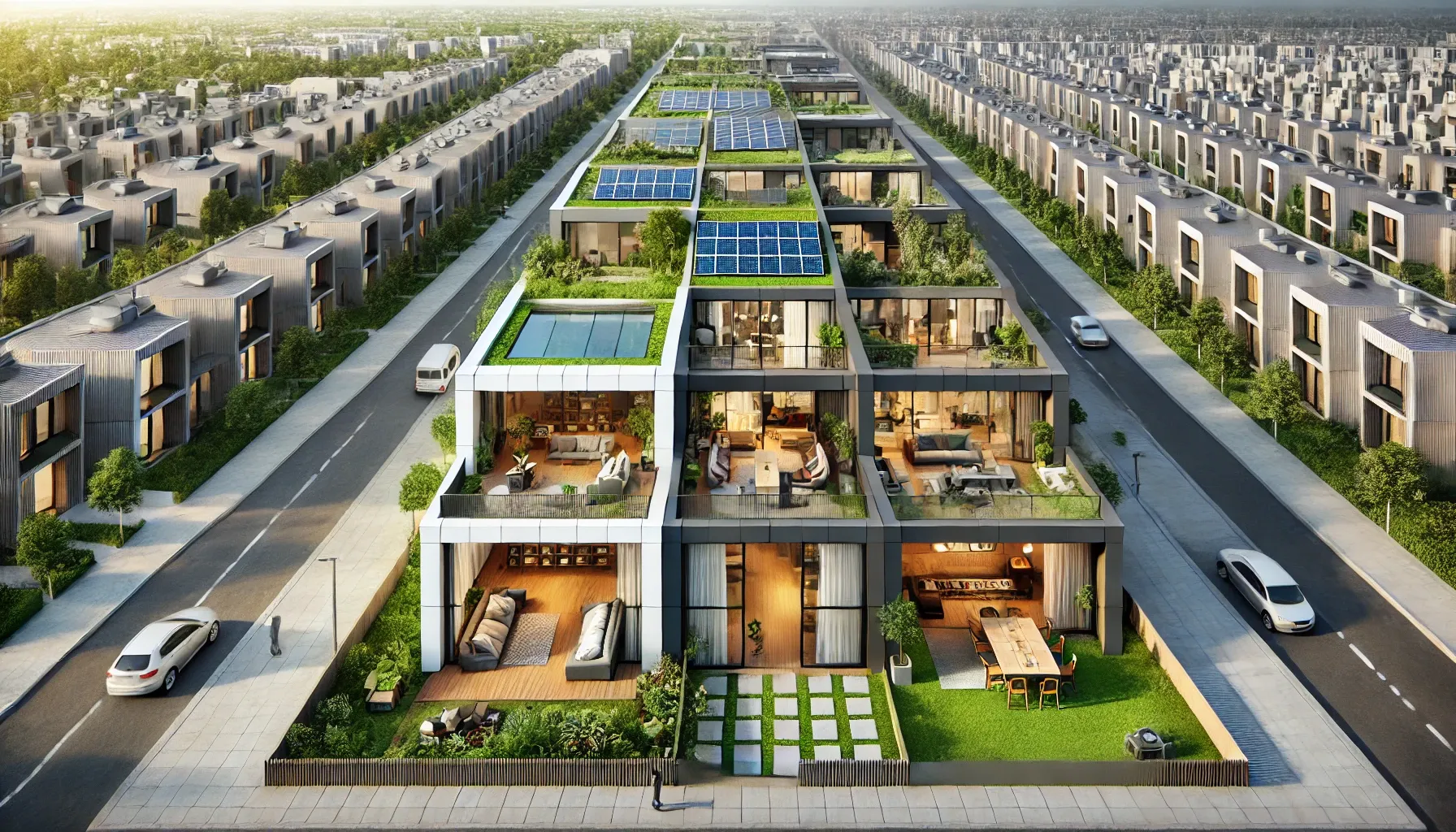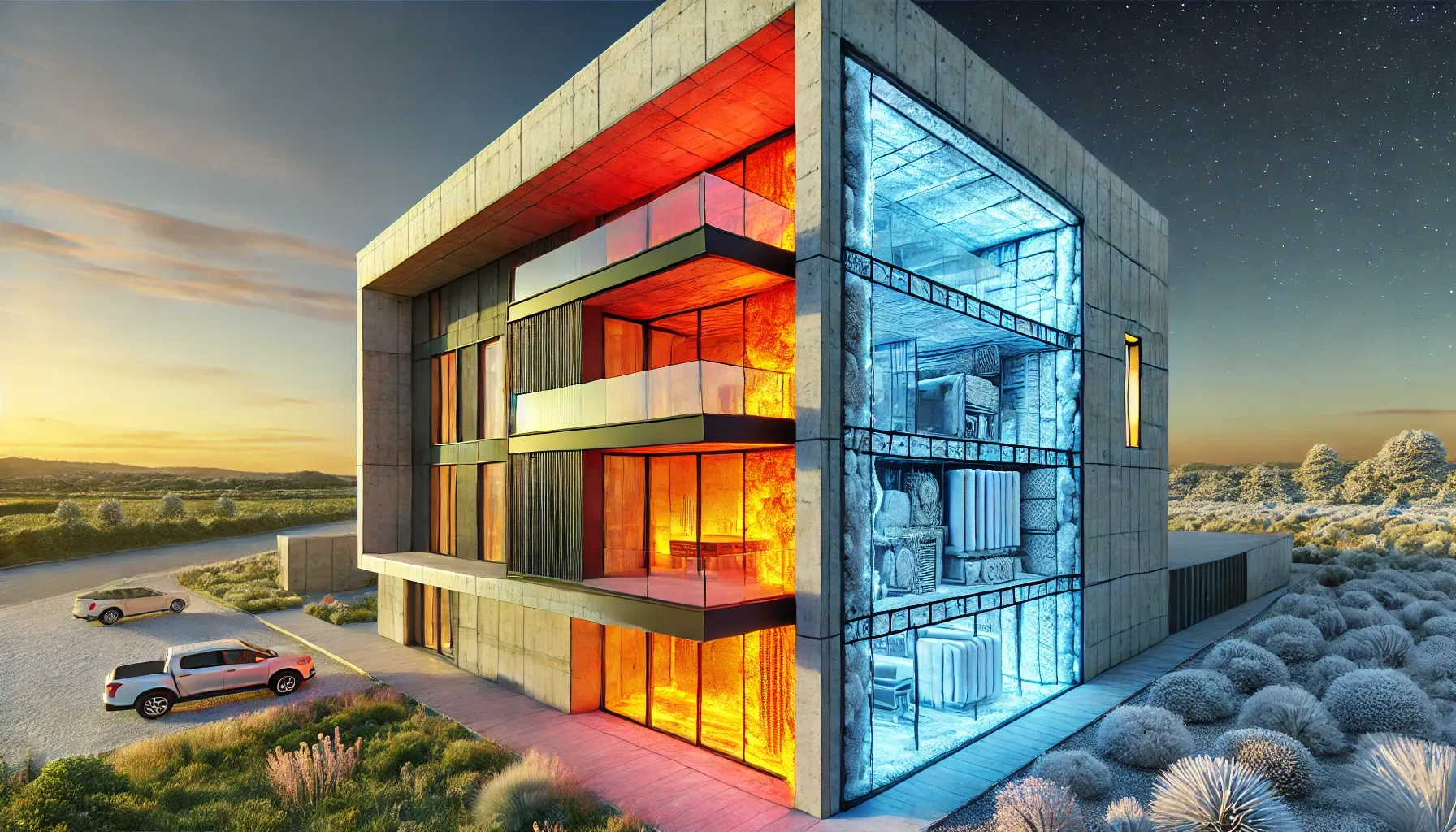Which is better: modern panel houses or Soviet-era "panelki"?

Introduction
Is there a difference between houses built during the Soviet period as "panel" buildings and modern structures made of precast concrete? What construction approach should be highlighted: monolithic or large-panel? And what role does ecology play in comparing the use of brick and concrete? In the third issue of our special project "Housing Ecology with Nova Borovaya," we address one of the most relevant topics in the construction industry. Our experiment involves not only local residents but also a qualified engineer.
Project critics
Our regular critics are well-known personalities from Novaya Borovaya, singer Anna Shalyutina and standup comedian Andrei Makaenok. They want to find out whether it is really comfortable to live in such houses.
The relevance of the issue
Why has this question become so significant? Construction factories are actively investing in the modernization of production facilities to create precast concrete. New buildings have turned out to be much more attractive than their Soviet counterparts, and modern three-layer panels offer a wide range of design options.
- stylish exterior finishes;
- various geometric shapes;
- thoughtful planning solutions.
But what about the quality of life and the level of comfort in these new buildings? The debates about "panel houses" have been going on for many years, and we will try to gain some clarity.
Public opinion on "panel buildings"
For many years, the opinion has been established regarding the shortcomings of old "panel" buildings. These homes were associated with inexpensive, less cozy living spaces. However, modern prefabricated concrete is a highly functional and versatile material that can offer a variety of architectural solutions:
- gable roofs;
- spacious ceilings;
- big windows.
These are just some of the advantages offered by reinforced concrete, which also requires a short construction time, as a significant part of the structure is manufactured in advance at the factory. Anna Shalyutina, a resident of Nova Borovaya, shares her opinion:“Visually, it looks appealing, but what is our actual comfort level? What is the temperature regime in summer and winter? Can precast concrete compare to monolithic or brick construction?”These questions are indeed important, and we hope that the experts will be able to answer them.
Referral to specialists
To understand how today's new buildings differ from those constructed in the 70s and 80s, we consulted experts. This topic is indeed complex, and it's difficult to grasp without a professional's knowledge.
Dmitry Yakimovich, a senior researcher at the research laboratory of building thermal physics and engineering systems at BNTU, talked to us about precast concrete and its potential risks. The interview was conducted by stand-up comedian Andrey Makaenok, a resident of Novaya Borovaya. The quality check took place in one of the apartments and at the construction site in Novaya Borovaya. We will share the most interesting aspects of this conversation later.
Modern buildings and panel houses
Andrey Makaenok: First of all, I'm interested in learning about how modern buildings differ from the familiar "panel" houses that we saw in our youth.
Dmitry Yakimovich: The new residential complexes are radically different from those built in the 70s and 80s. The most significant difference is in their construction.
In the past, three-layer reinforced concrete panels had a ribbed surface, where the connection between the outer and inner layers was made using ribs that also served as thermal bridges. These bridges negatively affected the thermal insulation of the outer walls, allowing cold air currents to penetrate into the buildings.
Modern heat insulation technologies
Modern constructions use more advanced flexible connections. Although the main elements still consist of outer and inner layers of reinforced concrete with an insulating layer in between, in these panels, the connection between the layers is provided by steel or plastic components.
This leads to the fact that the thermal heterogeneity coefficient of modern panels is significantly reduced and their thermal protection characteristics are greatly improved, which reduces the number of thermal bridges.
Thermal insulation inspection
Most often, we prefer to trust, but we also like to verify. In this context, we decided to conduct an experiment to assess the thermal insulation properties of the walls of the residential complex in "Nova Borovaya." However, carrying this out during the warm season turned out to be more challenging, and waiting for the winter cold took longer than expected.
Therefore, it is worth emphasizing that it is better to take possession of new buildings in winter, when we have the opportunity to instantly measure the thermal conductivity of the walls in the apartment.
Measurement of heat transfer
Dmitry Yakimovich: To evaluate the heat transfer of an external wall, it is necessary to measure the heat flow through the structures that separate the living space. This requires that the temperature difference between the outside environment and the interior rooms should be at least 12 degrees Celsius. Under current conditions, such a test is not possible.
The best conditions for these measurements are in winter, when the outdoor temperature does not exceed 7-8 degrees. Although it is possible to try to raise the temperature inside the room, creating the necessary temperature difference would require significant resources and is unlikely to yield satisfactory results.
Comparison of construction technologies
Now let's discuss which is preferable: houses made of precast concrete or brick structures.
Andrey Makaenok: Dmitry, is it possible to compare structures made of precast concrete and brick?
9 October 2024
29 January
29 September
9 October 2024
Dmitry Yakimovich: Houses built of prefabricated reinforced concrete are put together like large children's constructors. Each building consists of:
- external wall panels
- foundation
- internal partitions
- floor slabs
- beams
- balcony slabs
Each element is manufactured at the factory, undergoes molding, steaming, and has high geometric precision.
The future of housing construction
Thus, among the differences that appear between modern approaches to construction and those used in the past, we can highlight not only the variety of building materials, but also the technology of their production.
There is hope that with each new construction, we can improve the quality of living spaces, creating more comfortable conditions for future residents. This is crucial for shaping a safe and healthy urban environment.
I hope that consumers will not only base their decisions on personal preferences but also take into account new developments in the reliability and sustainability of housing when choosing construction technology. This will lay the foundation for creating a higher quality and more efficient future in the housing development sector.

Three-layer panels on flexible ties
A three-layer panel, based on flexible connections, is a product made up of multiple layers. Inside, there are reinforced concrete load-bearing elements, followed by an insulation layer, and the outer space is filled with reinforced concrete. It is important to emphasize that the components, pre-manufactured from reinforced concrete, arriving at the construction site already possess the necessary operational properties.
This is in clear contrast to the process of erecting buildings based on monolithic reinforced concrete, where time is needed for the concrete to gain strength. In some situations this may not occur due to deficiencies in the construction work. If the works are poorly executed, this is likely to result in the columns being sheathed in hardware, indicating that the reinforced concrete has not had time to reach the required level of strength.
This creates numerous problems, the solutions to which cannot be achieved without destroying the ceilings. In turn, precast concrete initially has the necessary strength characteristics after the thermal treatment is completed.
Assembly and installation quality
Undoubtedly, the success of any construction project depends not only on the quality of the raw materials but also on the qualifications of the installers. With high-quality assembly, both brick houses and precast concrete structures can offer the same level of comfort. However, in large-panel construction, it is easier to achieve the desired quality.
One of the main advantages of precast concrete buildings is their high assembly speed. For instance, it typically takes only 7-9 months to complete the construction of a nine-story building, while building a similar brick structure will take significantly longer. Moreover, concrete structures have better thermal insulation properties due to fewer joints and connections.
Advantages of large-panel housing construction
Among the other significant advantages of this technology, the following stand out first and foremost:
- Long service life;
- Ease of correcting potential defects.
Dmitry Yakimovich mentions that large-panel structures have an advantage in terms of durability. The thermal insulation layer is located inside a sturdy building element here. In brick houses, however, the insulation system is often installed on the outside and covered with a thin layer of plaster.
Reinforced concrete panels, with their thick layer, provide a long service life and comfort in use, as any deficiencies identified can be corrected at minimal cost and quickly return to design performance.
Eco-friendliness of materials
The issue of eco-friendliness is also not overlooked. This filling receives positive feedback due to its simplicity and minimal number of additional elements. In terms of environmental characteristics, concrete is on par with brickwork.
Basically, only components such as the following are used for its production:
- Cement;
- Sand;
- Gravel;
- Water.
Acceptance of the apartment by the new residents
When it comes to newcomers who need to have their apartments inspected, Dmitry Yakimovich recommends starting by checking the window openings. Attention should be paid to their occupancy, neatness, cleanliness and tightness.
If you notice any deviations in this regard, it will be a clear signal for a more thorough inspection of the other parts of the apartment.
Conclusion
In conclusion to our research, we can confidently assert that the topic of comparing Soviet "panel houses" and modern prefabricated concrete buildings is not just a debate about materials, but a broader conversation about how we perceive housing and comfort in contemporary conditions. Based on the interviews conducted and the opinions of experts like Dmitry Yakimovich, we have observed significant changes in construction technologies and materials. Modern three-layer panels truly provide...the best thermal insulationand the quality is significantly higher compared to their predecessors. This, in turn, raises the comfort level for residents, allowing them to enjoy an optimal temperature throughout the year.
Moreover, people's lifestyles and preferences are changing. Now, as more and more people are searchingenvironmentally friendlyIn comfortable apartments, the question of choosing between reinforced concrete and brick becomes relevant. As the discussion has shown, precast concrete can be just as eco-friendly as brick, and its advantages includespeed of raisingand the variety of forms clearly makes it an attractive option for modern developers and buyers.
Important points
- Quality of housingdoes not depend only on the material from which the buy/house/">house is built, but also on the quality of design, construction supervision and maintenance.
- Choose your housing carefully, considering all aspects: from the construction to the location.
In the end, each of us wants our home to be not only beautiful but alsocomfortable,safeI hope our special project has helped you better understand how construction technologies have changed, and perhaps it will give you some ideas on what to look for in your ideal home. I also hope that further research and discussions in the field of housing ecology will contribute to raising quality standards in construction, creating more comfortable and safe living conditions.
Comment
Popular Posts
9 October 2024
9932
29 September
327
9 October 2024
1484
Popular Offers

Subscribe to the newsletter from Hatamatata.com!
Subscribe to the newsletter from Hatamatata.com!
I agree to the processing of personal data and confidentiality rules of Hatamatata





